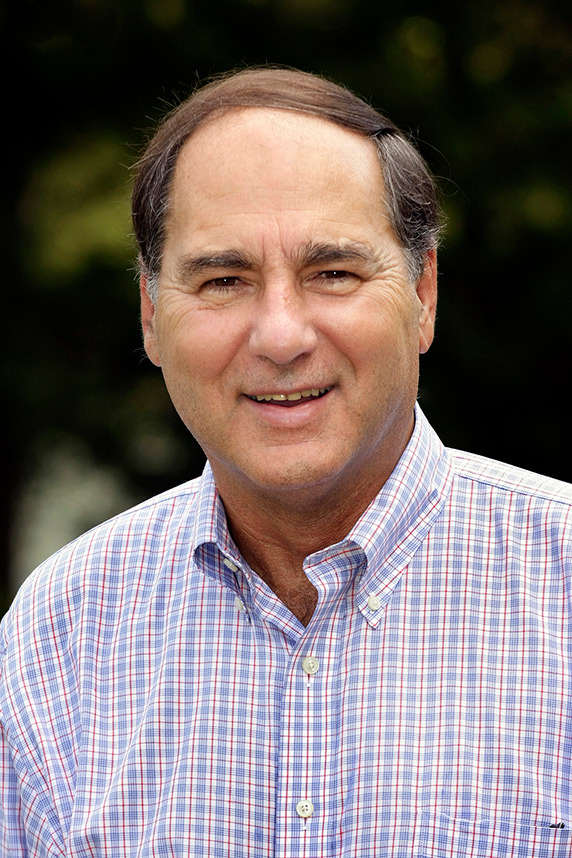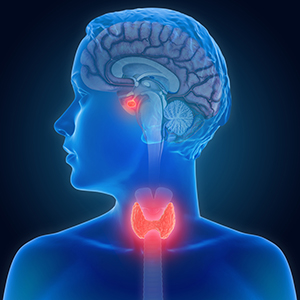Persistent exposure to lavender products is associated with premature breast development in girls, according to new research by NIEHS scientists. The findings also reveal that chemicals in lavender oil and tea tree oil are potential endocrine disruptors with varying effects on receptors for two hormones — estrogen and androgen (see sidebar). The study was published Aug. 8 in the Endocrine Society's Journal of Clinical Endocrinology and Metabolism.
 “LO [lavender oil] is the most widely used essential oil in both men and women,” wrote the authors of the new paper.
“LO [lavender oil] is the most widely used essential oil in both men and women,” wrote the authors of the new paper.“These findings demonstrated that the two oils can have hormonal-like effects for estrogen and testosterone in the body,” said senior author Kenneth Korach, Ph.D., lead researcher for the NIEHS Receptor Biology Group. “Lavender oil and tea tree oil could pose potential health exposure concerns and should be researched further, especially because these oils are available without a written prescription from medical professionals and they’re not regulated by the Food and Drug Administration.”
Unsafe alternatives?
 Korach uses different experimental approaches to investigate the endocrine-disrupting activities of a variety of chemicals. (Photo courtesy of Steve McCaw)
Korach uses different experimental approaches to investigate the endocrine-disrupting activities of a variety of chemicals. (Photo courtesy of Steve McCaw)Lavender oil and tea tree oil are among the most popular essential oils used today. “Our society deems essential oils and other ... remedies as safe alternatives for medical treatment, personal hygiene commodities, aromatherapy, and cleaning products,” said lead author Tyler Ramsey, who was a postbaccalaureate fellow on Korach’s team. “However, there are many natural products that have effects on the human body, similar to some synthetic drugs.”
In a previous study, Korach and his team showed that exposure to lavender oil and tea tree oil is linked to prepubertal gynecomastia, or abnormal breast development in males. Building on these findings in the new study, the team discovered that exposure to lavender fragrance products is also associated with a condition called premature thelarche. This condition causes premature breast development — without other signs of puberty — in girls younger than eight years of age.
Over a seven-year period, the clinical colleagues identified 24 patients who were seen for prepubertal gynecomastia or premature thelarche at Nicklaus Children’s Hospital in Miami, Florida. Among these patients, five girls and 11 boys were exposed to lavender fragrance-containing products such as colognes, shampoos, and soaps. An additional four girls seen for premature breast development at the University of California-Irvine or CHOC's Children's Clinic in Orange County, California, also used lavender fragrance products.
One girl who was bathed with a soap containing lavender oil since infancy showed breast development by one year of age. Another girl showed signs of breast development after one year of exposure to a lavender oil diffuser that ran all day on the nearby teacher’s table. Among the one boy and three girls with case reports, breast tissue regressed within six months after they stopped being exposed to the lavender fragrance products.
Potential endocrine disrupters
 “Tyler has been one of the best postbac research fellows we have had,” said Korach when Ramsey was an Outstanding Poster winner at the 2018 National Institutes of Health Postbac Poster Day. Ramsey was also selected as the 2018 Outstanding Fellow of the year by the Campion Fund. (Photo courtesy of Steve McCaw)
“Tyler has been one of the best postbac research fellows we have had,” said Korach when Ramsey was an Outstanding Poster winner at the 2018 National Institutes of Health Postbac Poster Day. Ramsey was also selected as the 2018 Outstanding Fellow of the year by the Campion Fund. (Photo courtesy of Steve McCaw)To explore the underlying mechanisms, Korach and his team examined the effects of eight compounds present in lavender oil and tea tree oil. Some of the components had varying degrees of estrogenic or anti-androgenic properties, as shown by their effects on estrogen receptor alpha and androgen receptor activities in human cells. The findings suggest that compounds in the essential oils may promote breast growth by enhancing estrogen activity while inhibiting androgen activity.
Ramsey originally presented these results at the Endocrine Society’s 100th annual meeting in March 2018. They reported that many of the chemicals tested were found in more than 65 other essential oils.
“It is important that physicians are aware that lavender oil and tea tree oil possess endocrine-disrupting activities, and although the effects we saw are very rare, such oils should be considered when evaluating unexplained early breast development in girls and gynecomastia in boys and adult men,” Korach said. “The general public should consider these experimental findings. If determined to be a potential causal effect, they may decide it’s best to discontinue use.”
Citations:
Ramsey JT, Li Y, Arao Y, Naidu A, Coons LA, Diaz A, Korach KS. 2019. Lavender products associated with premature thelarche and prepubertal gynecomastia: case reports and EDC activities. J Clin Endocrinol Metab; doi:10.1210/jc.2018-01880 [Online 8 Aug 2019].
Dornic N, Ficheux AS, Roudot AC, Saboureau D, Ezzedine K. 2016. Usage patterns of aromatherapy among the French general population: a descriptive study focusing on dermal exposure. Regul Toxicol Pharmacol 76:87–93.
Henley DV, Lipson N, Korach KS, Bloch CA. 2007. Prepubertal gynecomastia linked to lavender and tea tree oils. N Engl J Med 356(5):479–85.
(Janelle Weaver, Ph.D., is a contract writer for the NIEHS Office of Communications and Public Liaison.)









